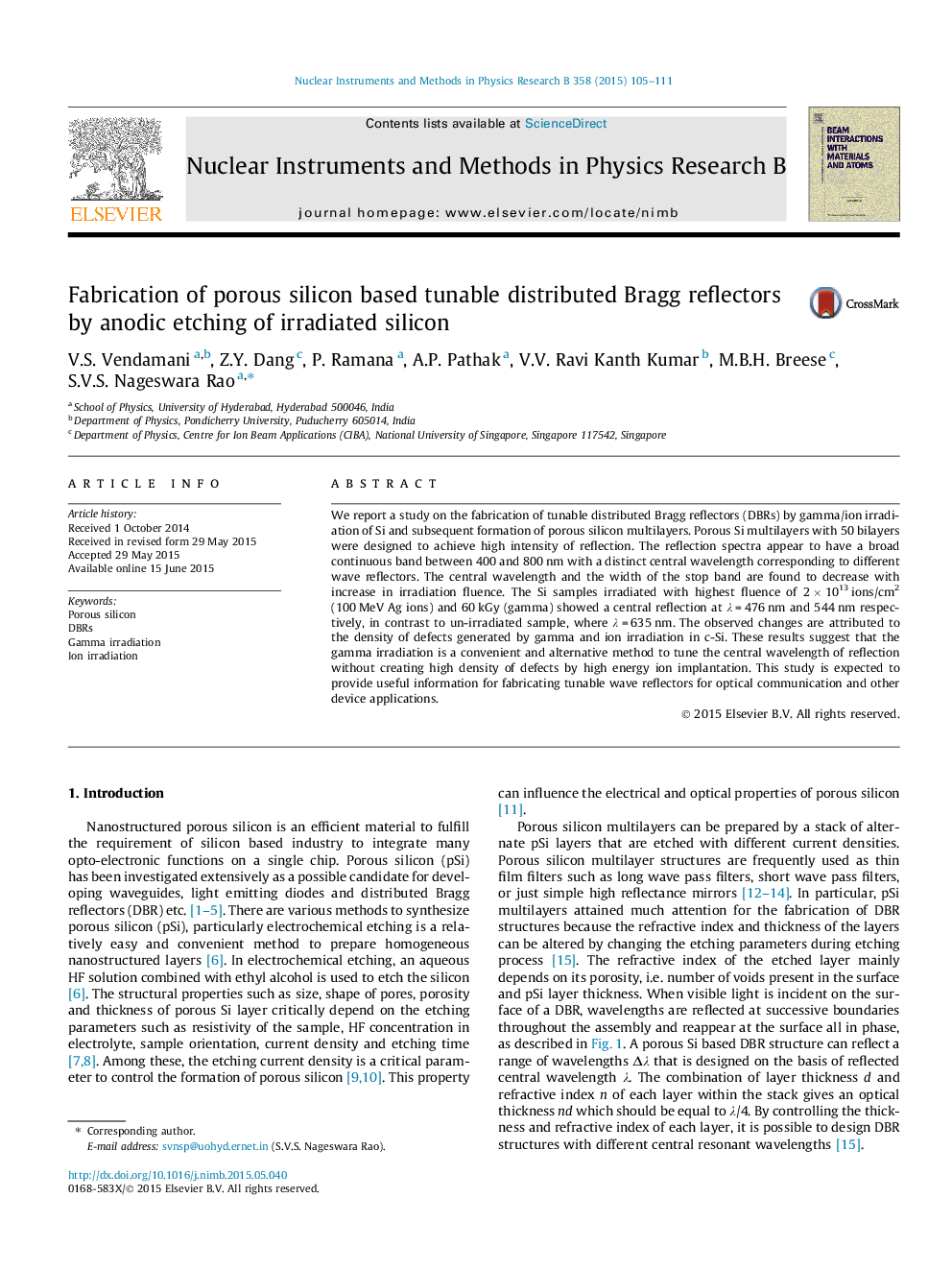| کد مقاله | کد نشریه | سال انتشار | مقاله انگلیسی | نسخه تمام متن |
|---|---|---|---|---|
| 1682646 | 1518662 | 2015 | 7 صفحه PDF | دانلود رایگان |

• Fabrication of tunable distributed Bragg reflectors (DBRs) by gamma/ion irradiation of Si and subsequent formation of porous silicon multilayers has been described.
• The central wavelength and the width of the stop band are found to decrease with increase in irradiation fluence.
• The Si samples irradiated with highest fluence of 2 × 1013 ions/cm2 (100 MeV Ag ions) and 60 kGy (gamma) showed a central reflection at λ = 476 nm and 544 nm respectively, in contrast to un-irradiated sample, where λ = 635 nm.
• The observed changes in the central wavelengths are attributed to the density of defects generated by gamma and ion irradiation in c-Si.
• This study is expected to provide useful information for fabricating tunable wave reflectors for optical communication and other device applications.
We report a study on the fabrication of tunable distributed Bragg reflectors (DBRs) by gamma/ion irradiation of Si and subsequent formation of porous silicon multilayers. Porous Si multilayers with 50 bilayers were designed to achieve high intensity of reflection. The reflection spectra appear to have a broad continuous band between 400 and 800 nm with a distinct central wavelength corresponding to different wave reflectors. The central wavelength and the width of the stop band are found to decrease with increase in irradiation fluence. The Si samples irradiated with highest fluence of 2 × 1013 ions/cm2 (100 MeV Ag ions) and 60 kGy (gamma) showed a central reflection at λ = 476 nm and 544 nm respectively, in contrast to un-irradiated sample, where λ = 635 nm. The observed changes are attributed to the density of defects generated by gamma and ion irradiation in c-Si. These results suggest that the gamma irradiation is a convenient and alternative method to tune the central wavelength of reflection without creating high density of defects by high energy ion implantation. This study is expected to provide useful information for fabricating tunable wave reflectors for optical communication and other device applications.
Journal: Nuclear Instruments and Methods in Physics Research Section B: Beam Interactions with Materials and Atoms - Volume 358, 1 September 2015, Pages 105–111